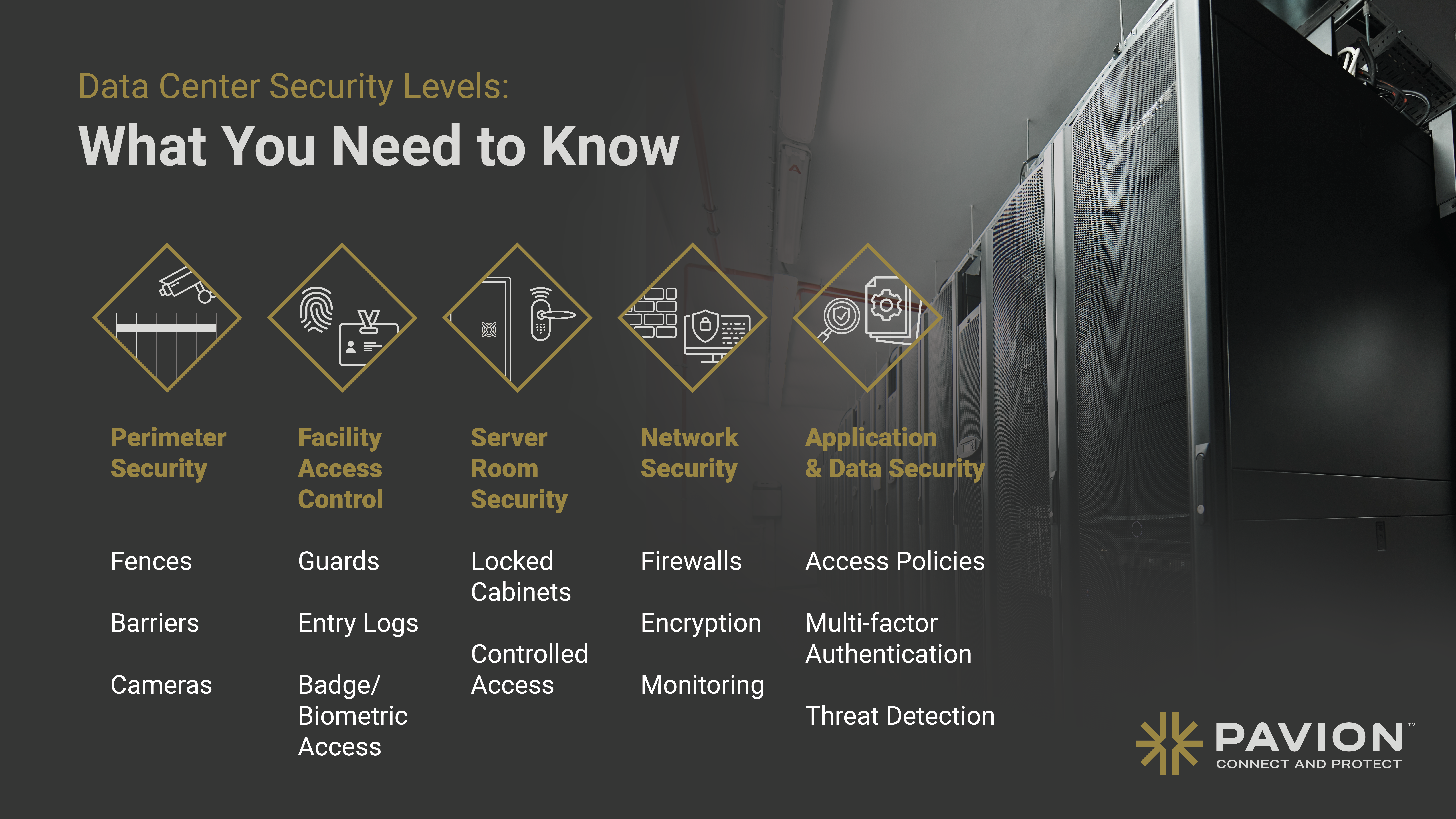
Data Center Security Levels: What You Need to Know
In today’s data-driven world, protecting the integrity, availability, and confidentiality of your information infrastructure is more critical than ever. Understanding data center security levels can help you determine whether your facility—or your service provider—is truly equipped to defend against modern threats.
From Tier 1 to Tier 4, each level of data center security is built to meet increasingly stringent requirements for uptime, redundancy, and protection. Whether you’re a small business or an enterprise-scale operation, knowing the difference can save you from costly downtime and potential breaches.
What Are Data Center Tiers?
The Uptime Institute defines four data center tiers that classify the design and functionality of a facility. Each tier represents a different level of infrastructure reliability and security:
- Tier 1 Data Center: Basic infrastructure with limited redundancy. Suitable for small businesses with low uptime needs.
- Tier 2 Data Center: Includes some redundancy and backup components but may still require shutdowns for maintenance.
- Tier 3 Data Center: Offers N+1 redundancy, meaning systems have at least one backup. Maintenance can occur without downtime.
- Tier 4 Data Center: Built to be fault-tolerant, with 2N redundancy. It offers the highest level of uptime and security, with systems that can operate even during major failures.
While these tiers primarily focus on infrastructure and uptime, they also imply increasingly advanced data center security requirements.
Data Center Security: Beyond Redundancy
Redundancy and reliability are just part of the story. True data center security involves layered protection that spans physical and digital domains. Let’s look at what that means for Tier 3 and Tier 4 data centers, in particular.
Tier 3 Data Center Security Requirements
A Tier 3 data center typically includes:
- 24/7 physical security staff
- Access control systems (badges, biometrics, etc.)
- Video surveillance and monitoring
- Two-factor authentication for sensitive areas
- Fire suppression and environmental controls
- Network-level security tools like firewalls, intrusion detection, and segmentation
These facilities can handle concurrent maintenance without downtime, making them ideal for businesses that demand high availability.
Tier 4 Data Center Security Requirements
At the highest level, Tier 4 data centers implement all the above and add:
- Advanced biometric access (iris scan, facial recognition)
- Multiple physical barriers including mantraps and anti-tailgating systems
- On-site armed guards and perimeter fencing
- Real-time threat detection and response systems
- Compliance with strict industry standards (HIPAA, FISMA, NIST, ISO 27001)
These are the facilities trusted by financial institutions, government entities, and global cloud providers.
What Are the Layers of Security in a Data Center?
Security in a data center is typically structured in layers, often called a “defense-in-depth” approach:
- Perimeter Security – Fences, barriers, cameras
- Facility Access Control – Guards, entry logs, badge/biometric access
- Server Room Security – Locked cabinets, controlled access
- Network Security – Firewalls, encryption, monitoring
- Application & Data Security – Access policies, multi-factor authentication, threat detection
Each layer is essential in protecting sensitive data from both external and internal threats.
Is There a Tier 5 Data Center?
Technically, no. The Uptime Institute’s official tier system ends at Tier 4. However, some providers use the term “Tier 5” for marketing purposes, often to describe facilities with enhanced security, sustainability, and automation features that exceed Tier 4 standards.
Compliance Matters: What About NIST?
The National Institute of Standards and Technology (NIST) publishes guidelines relevant to data center security, including:
- NIST SP 800-53 – Security and privacy controls
- NIST SP 800-171 – Protecting controlled unclassified information (CUI)
- NIST Cybersecurity Framework (CSF) – A risk-based approach to security
While not tier-specific, NIST standards are often used alongside Tier 3 and Tier 4 requirements to ensure data centers meet rigorous federal and industry benchmarks.
Choosing the right data center security level isn’t just a technical decision—it’s a strategic one. Whether you manage your own infrastructure or partner with a provider, knowing what each tier offers can help you align your security posture with your risk tolerance and compliance needs.
Check out our Data Center Security Solutions!
From physical design and access control to cybersecurity and compliance, our team offers comprehensive protection tailored to your facility’s needs—whether you’re operating a Tier 1 data center or upgrading to Tier 4.
Let’s talk about how we can help Connect and Protect your mission-critical data center.